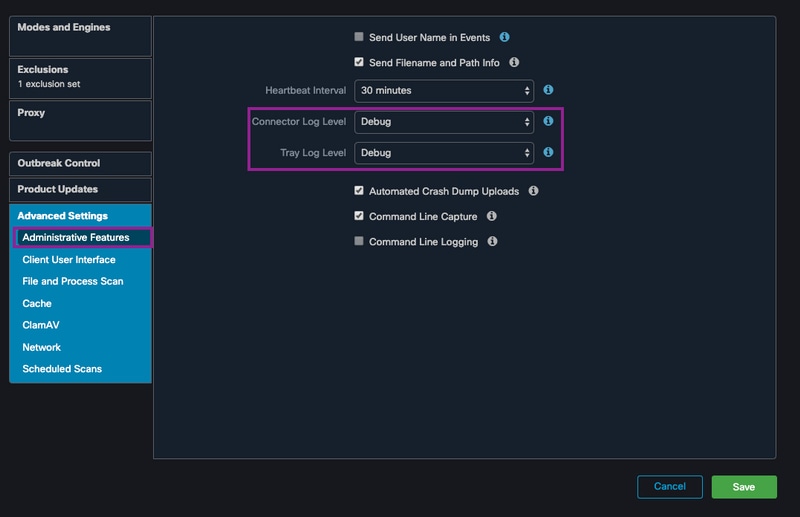At the machine that does not have the internet connection, copy the files to C: ProgramData ClamAV db: 5. A reboot may be required for the engine to load the new virus definitions files. Brew will be the foundation for most of the tools that are needed in this video series. Short and sweet we cover the one install and updateprocess that will. As this is a Windows application, you need to install wine in your MAC to use it so follow this procedure: 1. Go to the XQuartz homepage, download XQuartz, and install it. Howto: Install clamav on MacOS with Homebrew. Get open-source virus scanning running on your Mac. There is no reason not too! Ben Shapiro on macOS 17 November 2018 Squid/ClamAV: Fix for C-ICAP (0.5.x) not starting in pfSense. Currently running pfSense 2.4.4 snapshot, I found a problem where Squid+ClamAV would not work. Seems like someone is playing a prank on me. My computer settings change between days and I'm certain that this version is a home-brew and not the original OS X. Recovery/re-installation doesn't w.
The easiest way to get the ClamAV package is using Homebrew
Before trying to start the clamd daemon, you'll need a copy of the ClamAV databases.
Clamav Mac Homebrew Command
Inside /your/location/to/brew/etc/clamav, you'll see 2 files:
- freshclam.conf.sample
- clamd.conf.sample
Create copies of the samples:
Open up freshclam.conf, comment out 'Example' from line 8, and make sure
is enabled. Save your changes.
Then run
to download the ClamAV databases. The output will look something like this:
Open up clamd.conf, and
- Comment: 'Example' from line 8
- Uncomment: LocalSocket /tmp/clamd.socket from line 85
- Save your changes
Next, let's look for the location of clamd by running:$ brew ls clamav
You should see the following:


To start the clamd daemon, run the following:
You should now be able to scan a file by doing:
There are a number of solutions on the market for scanning a Mac for files that have become infected with a virus or macro-virus. Many of these have a negative return on investment. So customers can instead go the open source route to scan files and quarantine them. And customers can use Jamf Pro to enable doing so. This page is meant to provide a quick and dirty guide to doing so, along with how this might be packaged and potentially tracked with Jamf Pro. First, we’ll install and configure a free tool called clamav.There are a number of ways to install clam. For this example, just to get it done quickly, we’ll use homebrew which is simply brew with the install verb and clamav as the recipe to be brewed:This is going to place your configuration files in /usr/local/etc/clamav and these cannot be used as those supplied by default are simply sample configurations. Because the .sample files have a line that indicates they are an “Example” they cannot be used. So we’ll copy the sample configuration files for freshclam.conf and clamd.conf (the demonized version) and then remove the Example line using the following two lines:Clamav Mac Os Homebrew
cp/usr/local/etc/clamav/freshclam.conf.sample /usr/local/etc/clamav/freshclam.conf; sed-ie 's/^Example/#Example/g'/usr/local/etc/clamav/freshclam.confcp/usr/local/etc/clamav/clamd.conf.sample /usr/local/etc/clamav/clamd.conf; sed-ie 's/^Example/#Example/g'/usr/local/etc/clamav/clamd.conf Next, we’ll need to update the virus definitions for clamav. This can be run without the fully qualified file path but we are going to go ahead and include it as some computers might have another version installed (e.g. via macOS Server):The initial scan should cover the full hard drive and can be run as clamscanYour routinely run jobs should be setup to a quarantine location. Because all users should be able to see their data that was quarantined we would write this to /Users/Shared/Quarantine. We can then use a standard clamscan to scan the system and then “move” quarantined items to that location and log those transactions to /Users/Shared/Quarantine/Quarantine.txt.
Next, we’ll need to update the virus definitions for clamav. This can be run without the fully qualified file path but we are going to go ahead and include it as some computers might have another version installed (e.g. via macOS Server):The initial scan should cover the full hard drive and can be run as clamscanYour routinely run jobs should be setup to a quarantine location. Because all users should be able to see their data that was quarantined we would write this to /Users/Shared/Quarantine. We can then use a standard clamscan to scan the system and then “move” quarantined items to that location and log those transactions to /Users/Shared/Quarantine/Quarantine.txt.sudomkdir/Users/Shared/Quarantine
sudoclamscan -r — scan-pdf=yes-l /Users/Shared/Quarantine/Quarantine.txt — move=/Users/Shared/Quarantine//result = `cat/Users/Shared/Quarantine/Quarantine.txt`#Echo Quarantine into EAecho'<result>$result</result>'